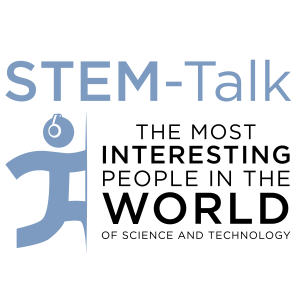
Episode 106: Francisco Gonzalez-Lima talks about brain metabolic mapping and Alzheimer’s
 2020-04-29
2020-04-29
Download
Right click and do "save link as"
Our guest today is Dr. Francisco Gonzalez-Lima, a professor in the department of psychology, pharmacology and toxicology and the department of psychiatry at The University of Texas at Austin. He also is a professor at the university’s Institute for Neuroscience.
We covered so much ground in our discussion with Francisco that we have split his interview into two parts. Today’s interview focuses on Francisco’s fascinating background as a youth and Cuban expatriate as well as his early research into Alzheimer’s Disease and brain metabolic mapping. The second part of our interview, which follows in a few weeks, covers two interventions Francisco has been exploring with the aim of protecting people against neurodegeneration: low-dose methylene blue and the application of near-infrared light.
Francisco describes himself as a behavioral neuroscientist. He and his colleagues at the Gonzalez-Lima Lab are recognized as world leaders for their research on the relationship between brain energy metabolism, memory and neurobehavioral disorders.
Although he has spent most of his academic career at the University of Texas, Francisco has been a visiting neuroscientist in Germany, England, Canada and Spain, and has delivered more than 120 lectures around the world about his brain research. He also has contributed work to more than 300 scientific publications.
Over the years, Francisco’s brain research has focused on transcranial lasers, memory enhancement, neuroprotection and neurocognitive disorders. Current research in the Gonzalez-Lima laboratory focuses on the beneficial neurocognitive and emotional effects of noninvasive human brain stimulation in healthy, aging and mentally ill populations. This research primarily uses transcranial infrared laser stimulation and multimodal imaging.
Show notes:
[00:03:23] Dawn opens the interview mentioning that Francisco was born in Cuba where his father worked as a veterinarian. Dawn asks how Francisco’s family ended up leaving Cuba for Costa Rica when he was only ten years old.
[00:04:25] Ken asks if it is true that Francisco got into a lot of fights as a child.
[00:05:19] Francisco talks about his time as a child accompanying his veterinarian father to take care of cattle.
[00:06:46] Dawn asks about Francisco’s time in college, two years of which he spent in Venezuela, and how he became known as an anti-communist student leader on campus.
[00:08:18] Francisco tells the story of how he ended up going to school at Tulane University.
[00:09:13] Dawn mentions that because Francisco’s father was a veterinarian, Francisco went to Tulane with the intent of working with animals. But after watching a professor dissect a human brain in class one day, Francisco changed his major.
[00:10:17] Ken asks Francisco what lead him to decide to get a bachelor’s degree in biology and psychology.
[00:11:49] Dawn asks about Francisco’s work with Nobel Prize winner Dr. Andrew Schalley during Francisco’s last summer at Tulane.
[00:12:56] Francisco explains how he ended up of the University of Puerto Rico getting his doctorate in anatomy and neurobiology.
[00:14:28] Dawn asks Francisco how learning about electrophysiology in his doctoral studies had an impact on him.
[00:15:22] Francisco tells an interesting story of his doctoral dissertation.
[00:16:21] Dawn asks about Francisco’s work with Dr. Walter Stiehl and the papers the two of them published in the European Journal of Pharmacology.
[00:17:19] Dawn mentions that in 1981 Francisco met Henning Scheich, a German professor who had done a study involving the newly developed 2-deoxyglucose autoradiographic method. Francisco talks about why this neuroimaging approach to brain research fascinated him and led him to propose an ambitious collaborative research project with Dr. Scheich.
[00:18:27] Dawn asks Francisco to talk about the work he did with Dr. Scheich to develop the human FDG (fluorodeoxyglucose) neuroimaging m...
view more
More Episodes
012345678910111213141516171819
Create your
podcast in
minutes
- Full-featured podcast site
- Unlimited storage and bandwidth
- Comprehensive podcast stats
- Distribute to Apple Podcasts, Spotify, and more
- Make money with your podcast
It is Free
- Privacy Policy
- Cookie Policy
- Terms of Use
- Consent Preferences
- Copyright © 2015-2024 Podbean.com



